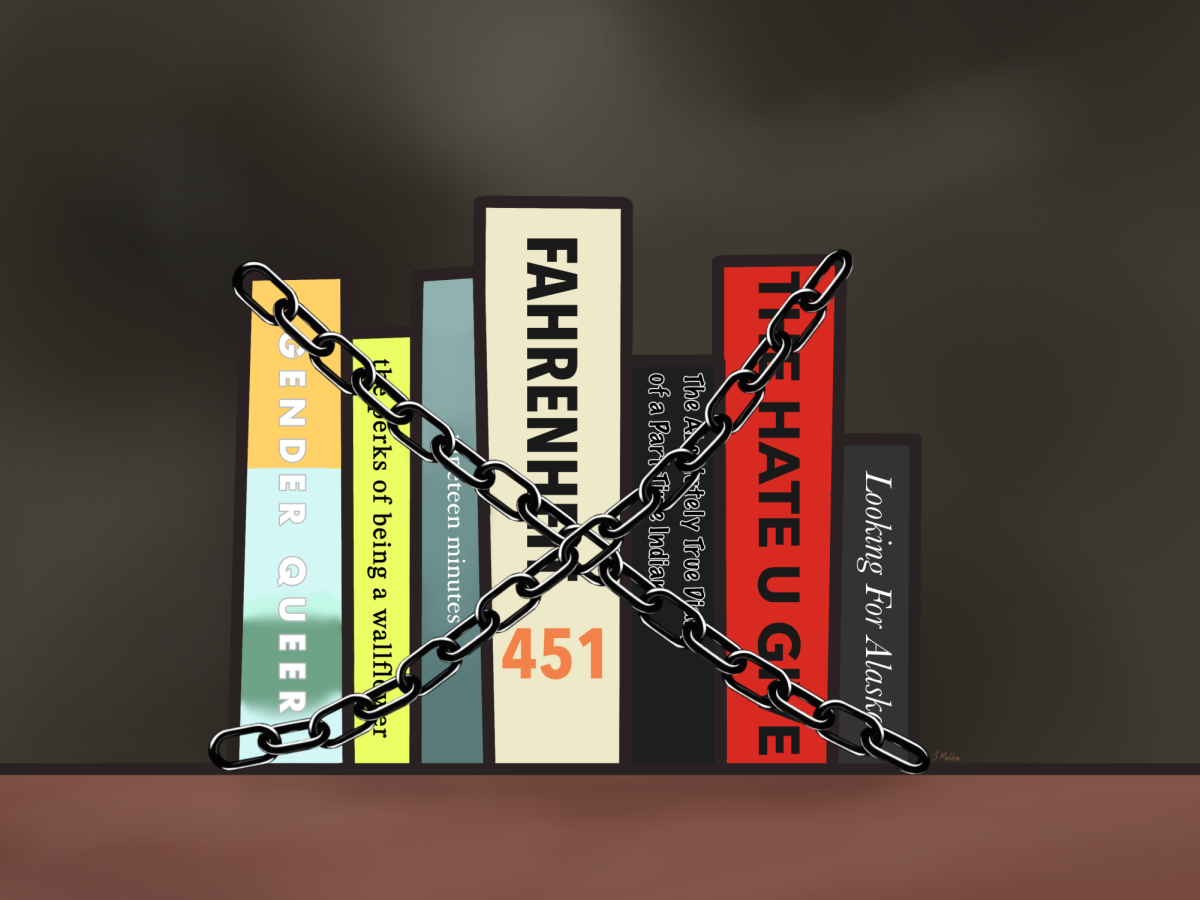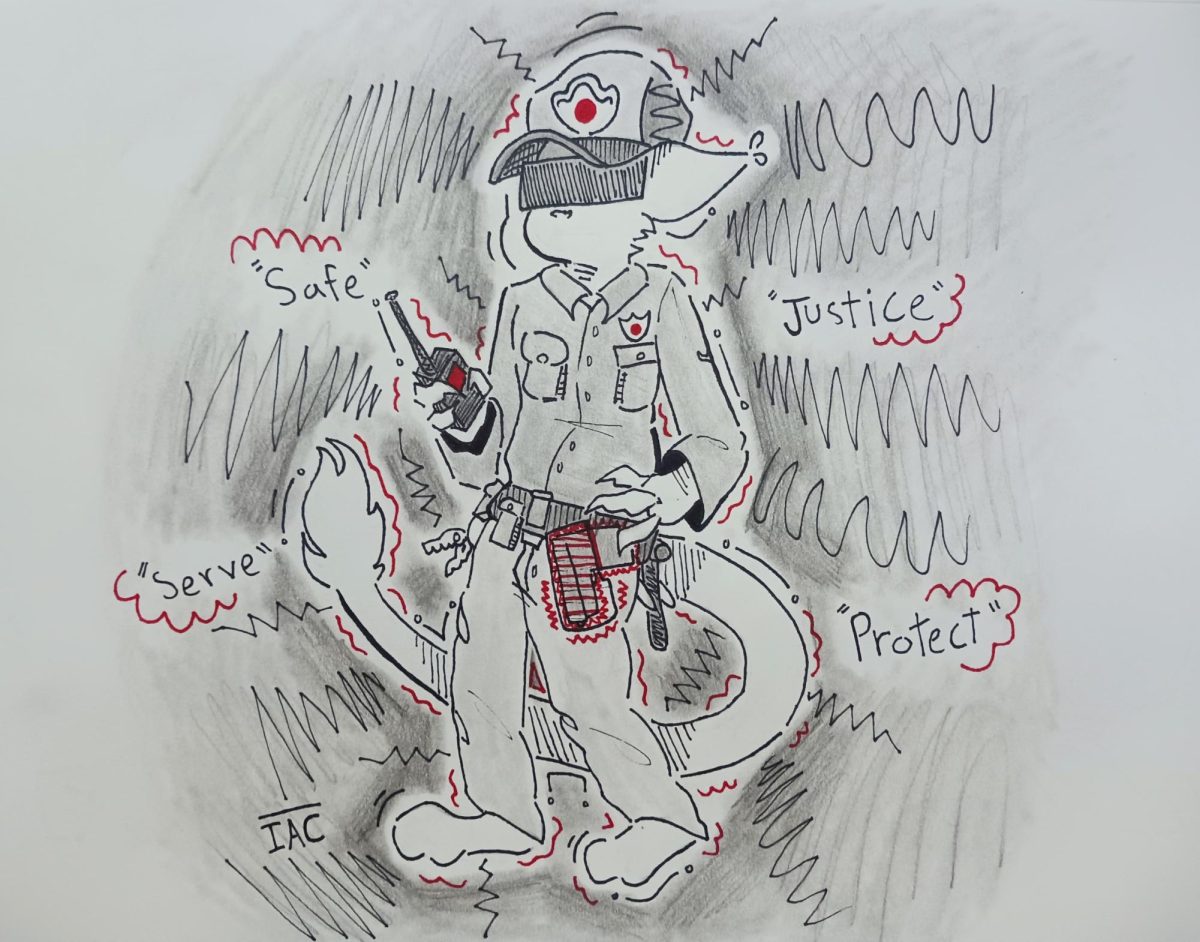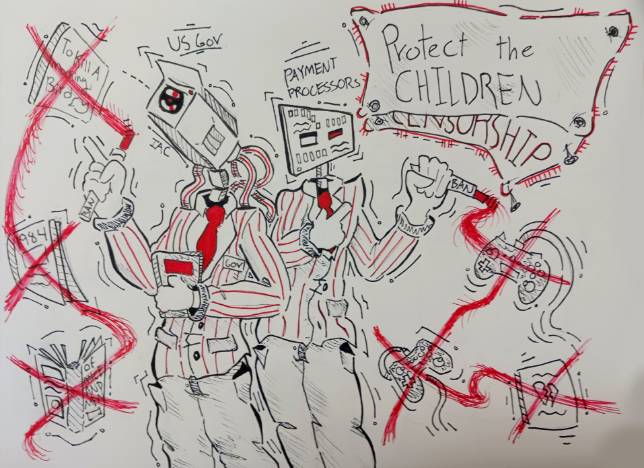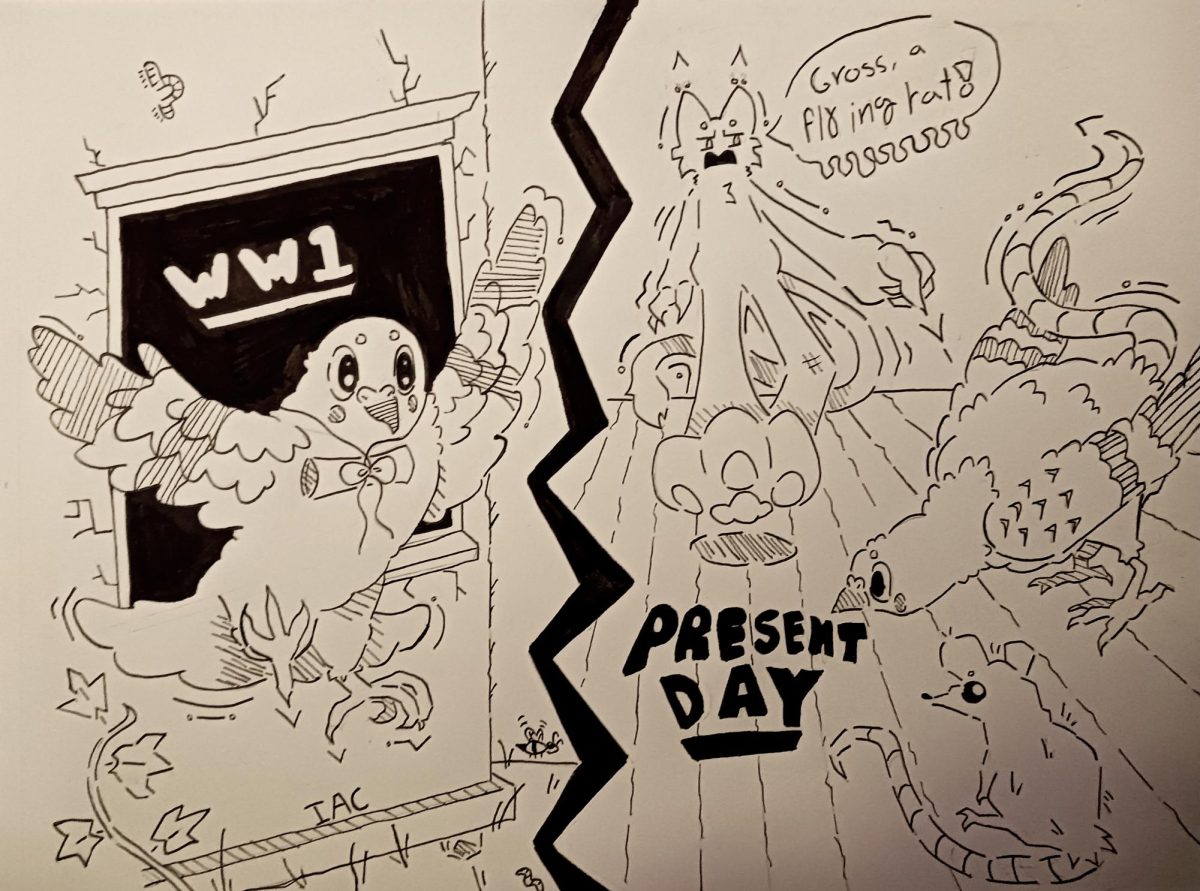Freedom of speech is a highly debated topic in America, and the freedom to read is no different. Book bans have surged in the past few years according to Pen America. Restricting access to certain books has a long history and the reasons for it have changed, too. Here’s everything you need to know about banned books in the United States.
WHAT IS A BANNED BOOK?
A banned book is a book that has been removed from a library because someone considered it to be harmful, dangerous, or inaccurate. Book restriction was most prominent in 1933 with the rise of “book burning,” according to the Holocaust Encyclopedia. This occurred in World War II when some German students burned books that they thought were “un-German” and had Jewish or Liberal authors or writing. The German Nazis used this as a way of censorship and limited people from being able to see what was truly happening.
HOW A BOOK IS BANNED
Book bans are mostly seen within public and school libraries. A book ban starts with a challenge against the book, which is defined by the First Amendment Museum as an “attempt to ban a book from a library, school district, institution, organization, government entity, retailer, or publisher based on its content. Challenges can either result in the book being banned or they can be overturned and the book remains in circulation at the organization.” If a book is banned, then it is no longer accessible in the facility.
THE TOPIC TODAY
The topic has resurged in recent years, with contributions from politicians and civilian voices alike. Today, the books that are being banned include classic children’s books that provide youth with the ability to understand and learn new information about the world, new vocabulary, new language skills, and communication between the storyteller and the listeners. Many of the books that are being banned tell stories of racial struggles, toxic relationship dynamics, gender identity, and United States history. Some politicians have called these kinds of books “anti-American,” and they fear that these books will “indoctrinate” students. This is considered an act of a “censorship attempt.” More and more politicians are trying to get involved at the state level and are continuing to do so at the federal level.
Book bans are mostly seen within public and school libraries. A book ban starts with a challenge against the book, which is defined by the First Amendment Museum as an “attempt to ban a book from a library, school district, institution, organization, government entity, retailer, or publisher based on its content. Challenges can either result in the book being banned or they can be overturned and the book remains in circulation at the organization.” If a book is banned, then it is no longer accessible in the facility.
National Banned Books Week is at the end of September or early October every year. The Guardian states that more than 10,000 public school books have been banned in the 2023 – 2024 school year, and 1,128 books are still being challenged to be banned. Book bans have cost districts around $34,000 to $135,000 a year, which can have a big impact on the schools.
THE UPS AND DOWNS
Although book banning is commonly seen as a negative thing, Britannica lists the positives. Some examples are that parents can have a say in what their children are reading and when they can read it. Every person is different, and not every topic will be appropriate to them; book banning prevents children from accessing inappropriate materials. By banning books, parents have a say in what their children read and said children are more likely to avoid reading topics that their parents want them to avoid.
There are also negatives to book banning. According to First Book, students are less engaged in books, which can limit the academic potential of students, and the authors of banned books’ health and well-being are negatively impacted. Banning books also limits knowledge of important historical people and events, and the lessons taught by these books cannot be easily accessed if banned.
Whether or not you agree with book bans, their impact is undeniable. It’s important to understand the topic in full and make your stance from there.







